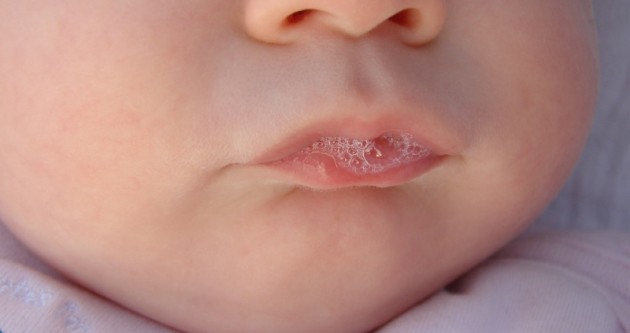|
Organophosphate Poisoning
Organophosphate poisoning is poisoning due to organophosphates (OPs). Organophosphates are used as insecticides, medications, and nerve agents. Symptoms include increased saliva and tear production, diarrhea, vomiting, small pupils, sweating, muscle tremors, and confusion. While onset of symptoms is often within minutes to hours, some symptoms can take weeks to appear. Symptoms can last for days to weeks. Organophosphate poisoning occurs most commonly as a suicide attempt in farming areas of the developing world and less commonly by accident. Exposure can be from drinking, breathing in the vapors, or skin exposure. The underlying mechanism involves the inhibition of acetylcholinesterase (AChE), leading to the buildup of acetylcholine (ACh) in the body. Diagnosis is typically based on the symptoms and can be confirmed by measuring butyrylcholinesterase activity in the blood. Carbamate poisoning can present similarly. Prevention efforts include banning very toxic types of or ... [...More Info...] [...Related Items...] OR: [Wikipedia] [Google] [Baidu] |
Emergency Medicine
Emergency medicine is the medical specialty concerned with the care of illnesses or injuries requiring immediate medical attention. Emergency physicians (or "ER doctors") specialize in providing care for unscheduled and undifferentiated patients of all ages. As frontline providers, in coordination with emergency medical services, they are responsible for initiating resuscitation, stabilization, and early interventions during the acute phase of a medical condition. Emergency physicians generally practice in hospital emergency departments, pre-hospital settings via emergency medical services, and intensive care units. Still, they may also work in primary care settings such as urgent care clinics. Sub-specialties of emergency medicine include disaster medicine, medical toxicology, point-of-care ultrasonography, critical care medicine, emergency medical services, hyperbaric medicine, sports medicine, palliative care, or aerospace medicine. Various models for emerg ... [...More Info...] [...Related Items...] OR: [Wikipedia] [Google] [Baidu] |
Atropine
Atropine is a tropane alkaloid and anticholinergic medication used to treat certain types of nerve agent and pesticide poisonings as well as some types of slow heart rate, and to decrease saliva production during surgery. It is typically given intravenously or by injection into a muscle. Eye drops are also available which are used to treat uveitis and early amblyopia. The intravenous solution usually begins working within a minute and lasts half an hour to an hour. Large doses may be required to treat some poisonings. Common side effects include dry mouth, abnormally large pupils, urinary retention, constipation, and a fast heart rate. It should generally not be used in people with closed-angle glaucoma. While there is no evidence that its use during pregnancy causes birth defects, this has not been well studied so sound clinical judgment should be used. It is likely safe during breastfeeding. It is an antimuscarinic (a type of anticholinergic) that works by inhibit ... [...More Info...] [...Related Items...] OR: [Wikipedia] [Google] [Baidu] |
Defecation
Defecation (or defaecation) follows digestion and is the necessary biological process by which organisms eliminate a solid, semisolid, or liquid metabolic waste, waste material known as feces (or faeces) from the digestive tract via the anus or cloaca. The act has a variety of names, ranging from the technical (e.g. bowel movement), to the common (like pooping or crapping), to the obscene (''Shit, shitting''), to the euphemistic ("doing number two", "dropping a deuce" or "taking a dump"), to the juvenile ("going poo-poo" or "making doo-doo"). The topic, usually avoided in polite company, forms the basis of scatological humor. human feces, Humans expel feces with a frequency varying from a few times daily to a few times weekly. Waves of muscle, muscular contraction (known as ''peristalsis'') in the walls of the colon (anatomy), colon move fecal matter through the digestive tract towards the rectum. Flatus may also be expulsed. Undigested food may also be expelled within the fec ... [...More Info...] [...Related Items...] OR: [Wikipedia] [Google] [Baidu] |
Urination
Urination is the release of urine from the bladder through the urethra in Placentalia, placental mammals, or through the cloaca in other vertebrates. It is the urinary system's form of excretion. It is also known medically as micturition, voiding, uresis, or, rarely, emiction, and known colloquially by various names including peeing, weeing, pissing, and euphemistically number one. The process of urination is under voluntary control in healthy humans and #Animals, other animals, but may occur as a reflex in infants, some elderly individuals, and those with neurological injury. It is normal for adult humans to urinate up to seven times during the day. In some animals, in addition to expelling waste material, urination #Other animals, can mark territory or express submissiveness. Physiologically, urination involves coordination between the central nervous system, central, autonomic nervous system, autonomic, and somatic nervous systems. Brain centres that regulate urination in ... [...More Info...] [...Related Items...] OR: [Wikipedia] [Google] [Baidu] |
Lacrimation
Tears are a clear liquid secreted by the lacrimal glands (tear gland) found in the eyes of all land mammals. Tears are made up of water, electrolytes, proteins, lipids, and mucins that form layers on the surface of eyes. The different types of tears—basal, reflex, and emotional—vary significantly in composition. The functions of tears include lubricating the eyes (basal tears), removing irritants (reflex tears), and also aiding the immune system. Tears also occur as a part of the body's natural pain response. Emotional secretion of tears may serve a biological function by excreting stress-inducing hormones built up through times of emotional distress. Tears have symbolic significance among humans. Physiology Chemical composition Tears are made up of three layers: lipid, aqueous, and mucous. Tears are composed of water, salts, antibodies, and lysozymes (antibacterial enzymes); though composition varies among different tear types. The composition of tears caused by an ... [...More Info...] [...Related Items...] OR: [Wikipedia] [Google] [Baidu] |
Salivation
Saliva (commonly referred as spit or drool) is an extracellular fluid produced and secreted by salivary glands in the mouth. In humans, saliva is around 99% water, plus electrolytes, mucus, white blood cells, epithelial cells (from which DNA can be extracted), enzymes (such as lingual lipase and amylase), and antimicrobial agents (such as secretory IgA, and lysozymes). The enzymes found in saliva are essential in beginning the process of digestion of dietary starches and fats. These enzymes also play a role in breaking down food particles entrapped within dental crevices, thus protecting teeth from bacterial decay. Saliva also performs a lubricating function, wetting food and permitting the initiation of swallowing, and protecting the oral mucosa from drying out. Saliva has specialized purposes for a variety of animal species beyond predigestion. Certain swifts construct nests with their sticky saliva. The foundation of bird's nest soup is an aerodramus nest. Venomous sa ... [...More Info...] [...Related Items...] OR: [Wikipedia] [Google] [Baidu] |
SLUDGE Syndrome
A cholinergic crisis is an over-stimulation at a neuromuscular junction due to an excess of acetylcholine, as a result of the inactivity of the acetylcholinesterase enzyme, which normally breaks down acetylcholine. Signs and symptoms As a result of cholinergic crisis, the muscles stop responding to the high synaptic levels of acetylcholine, leading to flaccid paralysis, respiratory failure, and other signs and symptoms reminiscent of organophosphate poisoning. Other symptoms include increased sweating, salivation, bronchial secretions along with miosis (constricted pupils). Some of the symptoms of increased cholinergic stimulation include: * Salivation: stimulation of the salivary glands * Lacrimation: stimulation of the lacrimal glands (tearing) * Urination: relaxation of the internal sphincter muscle of urethra, and contraction of the detrusor muscles * Defecation * Gastrointestinal distress: Smooth muscle tone changes causing gastrointestinal problems, including cramp ... [...More Info...] [...Related Items...] OR: [Wikipedia] [Google] [Baidu] |
Mnemonic
A mnemonic device ( ), memory trick or memory device is any learning technique that aids information retention or retrieval in the human memory, often by associating the information with something that is easier to remember. It makes use of elaborative encoding, retrieval cues and imagery as specific tools to encode information in a way that allows for efficient storage and retrieval. It aids original information in becoming associated with something more accessible or meaningful—which in turn provides better retention of the information. Commonly encountered mnemonics are often used for lists and in auditory system, auditory form such as Acrostic, short poems, acronyms, initialisms or memorable phrases. They can also be used for other types of information and in visual or kinesthetic forms. Their use is based on the observation that the human mind more easily remembers spatial, personal, surprising, physical, sexual, humorous and otherwise "relatable" information rather tha ... [...More Info...] [...Related Items...] OR: [Wikipedia] [Google] [Baidu] |
Muscarinic Acetylcholine Receptors
Muscarinic acetylcholine receptors (mAChRs) are acetylcholine receptors that form G protein-coupled receptor complexes in the cell membranes of certain neurons and other cells. They play several roles, including acting as the main end-receptor stimulated by acetylcholine released from postganglionic fibers. They are mainly found in the parasympathetic nervous system, but also have a role in the sympathetic nervous system in the control of sweat glands. Muscarinic receptors are so named because they are more sensitive to muscarine than to nicotine. Their counterparts are nicotinic acetylcholine receptors (nAChRs), receptor ion channels that are also important in the autonomic nervous system. Many drugs and other substances (for example pilocarpine and scopolamine) manipulate these two distinct receptors by acting as selective agonists or antagonists. Function Acetylcholine (ACh) is a neurotransmitter found in the brain, neuromuscular junctions and the autonomic ganglia. M ... [...More Info...] [...Related Items...] OR: [Wikipedia] [Google] [Baidu] |
Nicotinic Acetylcholine Receptors
Nicotinic acetylcholine receptors, or nAChRs, are receptor polypeptides that respond to the neurotransmitter acetylcholine. Nicotinic receptors also respond to drugs such as the agonist nicotine. They are found in the central and peripheral nervous system, muscle, and many other tissues of many organisms. At the neuromuscular junction they are the primary receptor in muscle for motor nerve-muscle communication that controls muscle contraction. In the peripheral nervous system: (1) they transmit outgoing signals from the presynaptic to the postsynaptic cells within the sympathetic and parasympathetic nervous system, and (2) they are the receptors found on skeletal muscle that receive acetylcholine released to signal for muscular contraction. In the immune system, nAChRs regulate inflammatory processes and signal through distinct intracellular pathways. In insects, the cholinergic system is limited to the central nervous system. The nicotinic receptors are considered cholinergi ... [...More Info...] [...Related Items...] OR: [Wikipedia] [Google] [Baidu] |
Activated Charcoal
"Activated" is a song by English singer Cher Lloyd. It was released on 22 July 2016 through Vixen Records. The song was made available to stream exclusively on ''Rolling Stone'' a day before to release (on 21 July 2016). Background In an interview with ''Rolling Stone'', Lloyd said about the song "I think when we first started writing 'Activated' – in the very beginning stages – I had said that I wanted a song eflectingexactly how I feel. t'sthis feeling that I have of just wanting to run as fast as I possibly can and just move. I wasn't going to just record something and release shit for the sake of having a song out, I wanted to feel something when I heard t and I wanted to feel like I did when I first started, like when I used to sing in my bedroom when I was 15." Critical reception Idolator's Robbie Daw said "Activated is a slinkly, sassy little R&B number, complete with the commanding line 'when I do the damn thing, just watch me.'" Estelle Tang of ''Elle'' said t ... [...More Info...] [...Related Items...] OR: [Wikipedia] [Google] [Baidu] |







